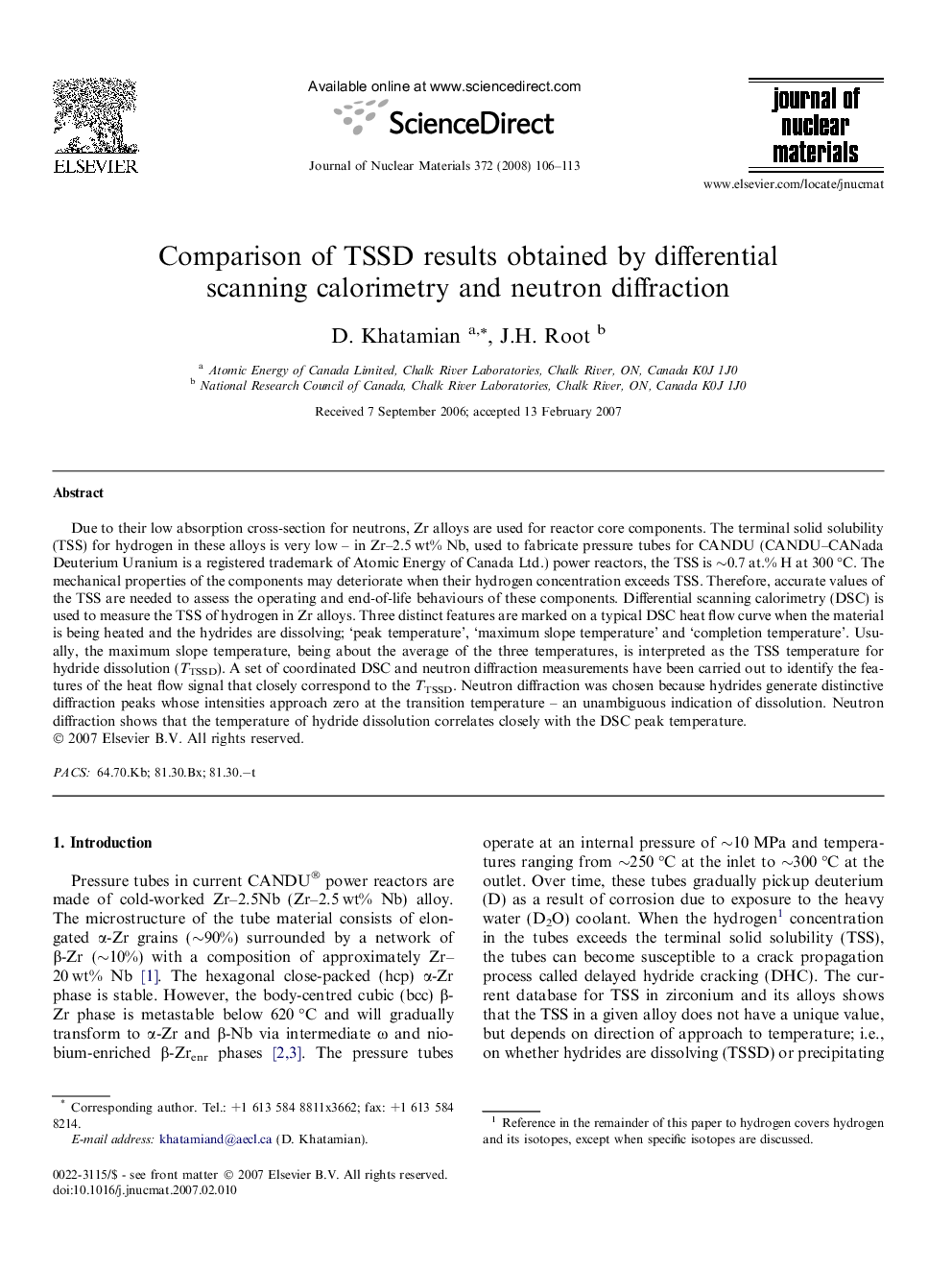| کد مقاله | کد نشریه | سال انتشار | مقاله انگلیسی | نسخه تمام متن |
|---|---|---|---|---|
| 1568942 | 999912 | 2008 | 8 صفحه PDF | دانلود رایگان |
عنوان انگلیسی مقاله ISI
Comparison of TSSD results obtained by differential scanning calorimetry and neutron diffraction
دانلود مقاله + سفارش ترجمه
دانلود مقاله ISI انگلیسی
رایگان برای ایرانیان
کلمات کلیدی
موضوعات مرتبط
مهندسی و علوم پایه
مهندسی انرژی
انرژی هسته ای و مهندسی
پیش نمایش صفحه اول مقاله

چکیده انگلیسی
Due to their low absorption cross-section for neutrons, Zr alloys are used for reactor core components. The terminal solid solubility (TSS) for hydrogen in these alloys is very low - in Zr-2.5 wt% Nb, used to fabricate pressure tubes for CANDU (CANDU-CANada Deuterium Uranium is a registered trademark of Atomic Energy of Canada Ltd.) power reactors, the TSS is â¼0.7 at.% H at 300 °C. The mechanical properties of the components may deteriorate when their hydrogen concentration exceeds TSS. Therefore, accurate values of the TSS are needed to assess the operating and end-of-life behaviours of these components. Differential scanning calorimetry (DSC) is used to measure the TSS of hydrogen in Zr alloys. Three distinct features are marked on a typical DSC heat flow curve when the material is being heated and the hydrides are dissolving; 'peak temperature', 'maximum slope temperature' and 'completion temperature'. Usually, the maximum slope temperature, being about the average of the three temperatures, is interpreted as the TSS temperature for hydride dissolution (TTSSD). A set of coordinated DSC and neutron diffraction measurements have been carried out to identify the features of the heat flow signal that closely correspond to the TTSSD. Neutron diffraction was chosen because hydrides generate distinctive diffraction peaks whose intensities approach zero at the transition temperature - an unambiguous indication of dissolution. Neutron diffraction shows that the temperature of hydride dissolution correlates closely with the DSC peak temperature.
ناشر
Database: Elsevier - ScienceDirect (ساینس دایرکت)
Journal: Journal of Nuclear Materials - Volume 372, Issue 1, 15 January 2008, Pages 106-113
Journal: Journal of Nuclear Materials - Volume 372, Issue 1, 15 January 2008, Pages 106-113
نویسندگان
D. Khatamian, J.H. Root,